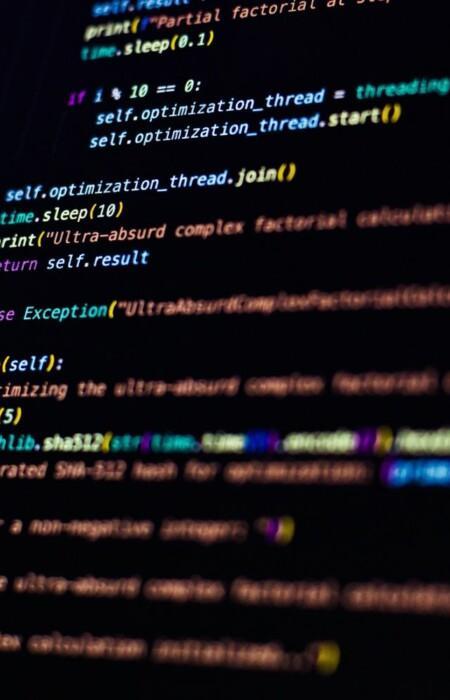Secure Coding in C and C++
Your application written in C or C++ works as intended, so you are done, right? But did you consider feeding in incorrect values? 16Gbs of data? A null? An apostrophe? Negative numbers, or specifically -232? Because that’s what the bad guys will do – and the list is far from complete.
Handling security needs a healthy level of paranoia, and this is what this course provides: a strong emotional engagement by lots of hand on labs and stories from real life, all to substantially improve code hygiene. Mistakes, consequences and best practices are our blood, sweat and tears.
All this is put in the context of C and C++, and extended by core programming issues, discussing security pitfalls of code written in these languages.
So that you are prepared for the forces of the dark side.
So that nothing unexpected happens.
Nothing
Paikka
Helsinki
Koulutusmuoto
Classroom
Remote
Kesto
3 päivää
Hinta
2250 €
Target Group
C/C++ developers.
Course objectives
- Understanding Web application security issues
- Detailed analysis of the OWASP Top Ten elements
- Going beyond the low hanging fruits
- Explain approaches in handling security challenges in code
- Identity security vulnerabilities and their consequences
- Learn the best practices in how to avoid these mistakes
Prerequisites
General C/C++ development.
Koulutuksen sisältö
Day 1
Security basics
- What is security?
- Threat and risk
- Types of threats against computer systems
- Consequences of insecure software
- Constraints and the market
- Bugs, vulnerabilities and exploits
Categorization of bugs
- Seven pernicious kingdoms
- Common Weakness Enumeration (CWE)
- CWE/SANS Top 25 Most Dangerous Software Errors
- SEI Cert Secure Coding Guidelines
- Vulnerabilities in the environment and the dependencies
Buffer overflow
x86 assembly and calling conventions
- X86 assembly essentials
- Registers and addressing
- Instructions
- Calling conventions on x86
* Calling convention – what it is all about
* The stack frame
* Prologue and epilogue
* Stacked function calls
* Recursion
Buffer overflow on the stack
- Buffer overflow – basics
- Buffer overread and overwrite
- Stack smashing
- Exploitation – Hijacking the control flow
- Lab – Buffer overflow 101, code reuse - Exploitation – Injecting a shellscript
* Lab – Code injection, BoF exploitation with a shellcode
* Buffer overflow on the heap
- Buffer overflow on the heap – an example exploitation
- Lab – Heap overflow
- Heap overflow best practices
- Case study – Heartbleed
- Lab - Heartbleed
*Pointer subterfuge
- Pointer manipulation
- Write-what-where
- Modification of jump tables
- Hijacking GOT and RELRO protection
- Overwriting function pointers
- Lab – Overwriting virtual function table
* Some typical mistakes leading to BoF
- Off-by-one
- Allocating nothing
- String length calculation mistakes
- Lab – Analyze UTF-8 encoding
- String termination confusion
- Lab – String termination confusion
- Other typical BoF weaknesses
BoF protection best practices
- Safe and unsafe function
- base_string and std::string
- Some less-known dangerous function
* Lab – Fixing buffer overflow - Compiler options and instrumentation
* Using FORTIFY_SOURCE
- Lab – Effects of FORTIFY
* Compile-time instrumentation
* Stack smashing protection
- Detecting BoF with the canary
- Argument cloning
- Stack smashing protection on various platforms
- The changed prologue and epilogue
- Lab – Effects of stack smashing protection - Runtime protection
* Runtime instrumentation
* Address Space Layout Randomization (ASLR)
- ASLR on various platforms
- Lab – Effects of ASLR
- Circumventing ASLR – NOP sledging
- Heap spraying
* Non-executable memory areas
- The NX bit
- Write-xor-execute (W^X)
- NX on various platforms
- Lab – Effects of NX
- NX circumvention – Code reuse attacks
- Arc Injection – Return-to-libc
- Lab – Exploit return-to-libc
- Cascading return-to-libc
- Return Oriented Programming (ROP)
- Lab – ROP demonstration
- Whatever Oriented Programming
- Protection against ROP
Day 2
Common software security weaknesses
Input validation
- Input validation principles
Blacklists and whitelists
* Validation with regex
* What to validate – the attack surface
* When to validate – validation vs transformations
* Where to validate – defense in depth - Injection
* Injection principles
* Injection attacks
* Code injection
- Command injection
- Lab – Command injection
- Command injection best practices
- Case study – Shellshock
- Lab - Shellshock
- Process control – library injection
- DLL hijacking
- Lab – DLL hijacking
* Injection best practices
- Input validation
- Output sanitization
- Encoding and escaping the output
- Encoding challenges - Integer handling
* Representing signed numbers
* Integer visualization
* Integer problems
- Integer overflow
- Lab – Integer overflow
- Case study – Android Stagefright
* Signed / unsigned confusion
- Lab – Signed / unsigned confusion
* Integer truncation
- Case study – Wannacry
* Best practices
- Upcasting
- Precondition testing
- Postcondition testing
- Using big integer libraries
- Lab – Integer handling best practices
- The AIR integer model
- Other numeric problems
- Division by zero
- Working with floating-point numbers - Format string issues
* The problem with printf()
* Format specifiers of printf()
* Exploiting the printf format string weakness
* Lab – Exploiting format string - Some other input validation problems
* Improper address validation in IOCTL
Security features
- Authentication
* Authentication basics
* Authentication weaknesses
* Case study – PayPal two factor authentication bypass
* User interface best practices
* Password management
- Inbound password management
- Storing account passwords
- vPlaintext passwords at Facebook
- Lab – Why just hashing passwords is not enough?
- Dictionary attacks and brute forcing
- Salting
- Adaptive hash functions for password storage
- Password in transit
- Password policy
- Weak and strong passwords
- Using passphrases
- Lab – Applying a password policy
- The Ashley Madison data breach
- The dictionary attack
- The ultimate attack
- Exploitation of the results and the lessons learnt
- Outbound password management
- Hard coded passwords
- Lab – Hardcoded password
- Password in configuration file
- Protecting sensitive information in memory
- Challenges in protecting memory
- Heap inspection
- Compiler removal of memory clearing code
- Sensitive information in non-locked memory - Authorization
* Access control basics
* Missing or improper authorization
* File system access control
- Improper file system access control
- Ownership
- chroot jail
- Using umask()
- Linux filesystem
- LDAP
* Access control in databases
- Lab – Database access control
* Privileges and permissions
- Permission manipulation
- Incorrect use of privileged APIs
- Exposed IOCTL with Insufficient access control
- Permission best practices
- Principle of least privilege
- Principle of separation of privileges
- Permission granting
- Privilege dropping
- vHandling of insufficient privileges - Information exposure
* Exposure through extracted data and aggregation
* System information leakage
- Leaking system information
- Relying on accessibility modifiers
- Lab – Inappropriate protection by accessibility modifier
* Information exposure best practices - UI security
* UI security principles
* Sensitive information in the user interface
* Misinterpretation of UI features or actions
* Insufficient UI feedback
* Relying on hidden or disabled UI element
- Lab – Hidden or disabled UI element
* Insufficient anti-automation
Day 3
Common software security weaknesses
Time and state
- Thread management best practices
* Thread management best practices in C/C++ - Race conditions
* Race condition in object data members
- Lab – Race condition
* File race condition
- Time-of-check-to-time-of-usage (TOCTTOU)
- Lab - TOCTTOU
- Insecure temporary file
* Potential race condition in C/C++
- Race condition in signal handling
- Forking
- Bit-field access - Mutual exclusion and locking
* Deadlocks
- Lab – Locking
* Synchronization and thread safety
- Synchronization and thread safety in C/C++
Errors
- Error and exception handling principles
- Error handling
* Returning a misleading status code
* Error handling in C
* Error handling in C++
* Information exposure through error reporting - Exception handling
* In the catch block. And now what?
* Empty catch block
* Best practices for catch blocks
* Overly broad throws
* Catching NULL pointer exceptions
* Exception handling in C++
- Lab – Exception handling mess
Code quality
- Data
* Type mismatch
- Lab – Type mismatch
* Function return values
- Unchecked Return Value
- Case study – MacOS X password hash change
- Omitted return value
- Returning unmodifiable pointer
* Initialization and cleanup
- Uninitialized variable
- Constructors and destructors
- Class initialization cycles
- Declaration and allocation issues in C
- Allocation and deallocation in C++
*Unreleased resource
- Array disposal
- Lab – Mixing delete and delete[] - Object oriented programming pitfalls
* Accessibility modifiers
* Inheritance and overriding
* Implementing the copy operator
* Mutability
* Cloning
- Cloning sensitive classes – object hijacking
- Object hijacking – best practices
* Serialization
Wrap up
Secure coding principles
- Principles of robust programming by Matt Bishop
- Secure design principles of Saltzer and Schröder
- Some more principles
And now what?
- Further sources and readings
- .NET and C# resources
- Further labs and challenges to do


